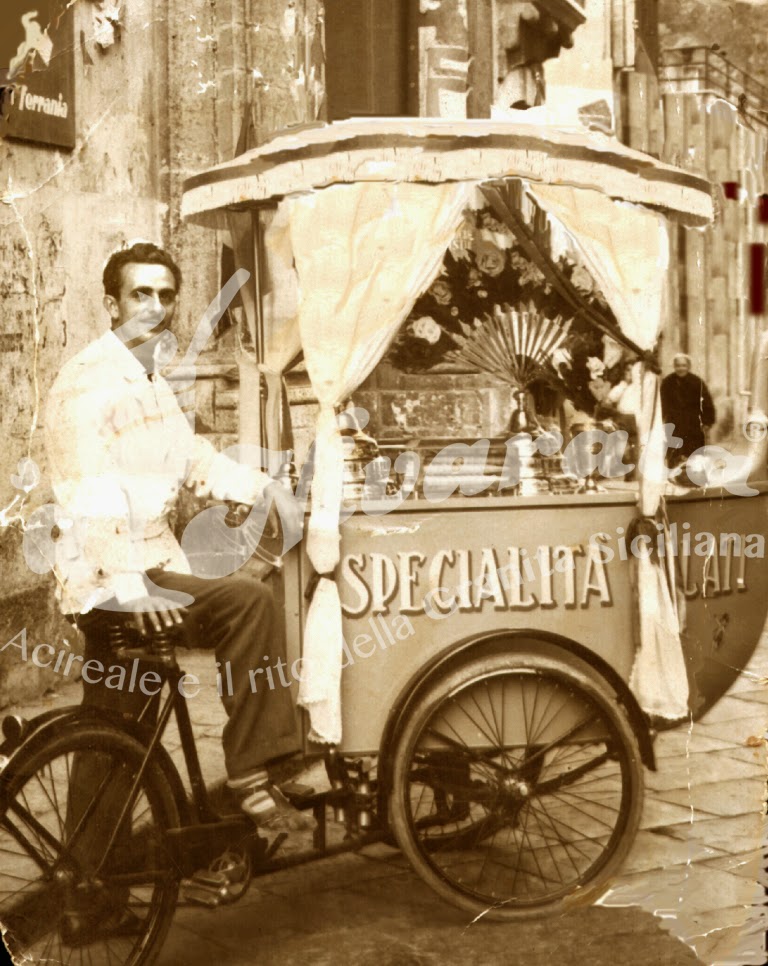CHIAVARI, Italy - Compact and decidedly Sicilian Baroque, the town of Acireale on the east coast of Sicily is 10 miles from Catania and 26 miles from Mt. Etna. The distance from Mt. Etna is important as that’s where Acesi used to go to collect snow when they wanted to make granita.
The Aces don’t climb Mt. Etna for snow any more, those days are long gone, but their passion for granita is as strong as ever. In fact there is a grand Granita Festival held here every year called "A ‘nivarata” (http://www.nivarata.it/en/blog/#).
The name “nivarata” comes from the word “nivaroli”, which is what the people who used to collect the snow from Mt. Etna were called. In order to keep the snow from melting, they stored it in special stone buildings that they built over natural caves called “case (houses) di neviere”.
While granita we eat today was created by Sicilians, the idea originated with the Arabs who ruled the island for almost four hundred years. During that time they introduced the locals to a refreshing iced drink which they flavored with fruit syrup or rose water. The Sicilians took the idea one step further. Instead of an iced drink, they collected snow/ice from Mt. Etna and during the hot summer months the ice was grated and covered with fruit syrup or rose water creating what we now know as granita.
This simple,but ingenious idea has evolved over the centuries, and now frozen snow, aka granita, comes in a infinite variety of flavors from lemon, almond, mandarin orange, jasmine, coffee, mint, pistachio, tangerine, and when in season wild strawberries and blackberries.
There are actually dozens more exotic flavors and flavor combinations such as "oro verde di Sicilia” with pistachio and tangerine, and 'za Tanina "with chopped almonds, “the Delights of Etna” with almonds, cream, vanilla, orange juice, fresh strawberries and pistachios and "Cremeuse of Sicily "with almonds, lemon, anise, mint, cinnamon water and mandarin orange, and Acireale is the best place to sample all of them.
Acireale’s most famous ice cream/granita maker was a man they called Don Angilinu 'u gilataru. He learned how to make ice cream and granita working in a local gelateria. After a few years he went into business for himself. He converted a three wheel bicycle to hold containers of ice cream and granita and peddled from piazza to piazza and through the streets of Acireale selling his frozen confections.
 |
| Don Angilinu 'u gilataru |
”During the 1940’s when my father was selling granita from his bicycle, the favorite flavors were almond coffee and chocolate,” says Santo Trovato, the son of Don Angilinu ‘u gilataru. “He would start making ice cream and granita at 3 in the morning producing about 80 kilos (160 lbs) of granita each day. It wasn’t all for him, there were four others who also sold from bicycle carts and they each carried about twenty liters each.”
The granita Don Angilinu ‘u gilataru produced was smooth and sweet. It had a different texture than the granita you’ll find on the other side of the island as the texture of granita changes slightly depending on where you are. In Palermo, and on that side of the island, granita is a little grainy, while in Acireale and the east side of Sicily it is smooth. The variation is the result of different freezing techniques. The smooth versions are produced in an ice cream maker while the grainier version are frozen in metal containers and stirred by hand every once in a while.
Here’s an easy recipe for lemon granita you might like to try. If you like your dessert on the sweeter side, increase the amount of sugar shown in the recipe to 1/2 cup.
GRANITA DI LIMONE
2 to 3 large lemons (pesticide free)
1 cup filtered or bottled still water (not distilled)
1/3 cup superfine granulated sugar
PREPARATION
With a vegetable peeler remove zest in long pieces from 2 lemons. Squeeze 1/2 cup juice from lemons.
In a small heavy saucepan heat water and sugar, stirring until sugar is dissolved. Stir in zest and transfer syrup to a bowl to cool. Chill syrup, covered, until cold. Discard zest and stir in lemon juice.
For smooth eastern-Sicilian granita:
Freeze lemon mixture in an ice-cream maker until spoonable but not crumbly. Serve immediately.
For more textured western-Sicilian granita:
Freeze lemon mixture in a metal bowl, stirring every 30 minutes to remove ice crystals from side of bowl, until liquid has become granular but is still slightly slushy, about 3 to 4 hours. Serve immediately.




























